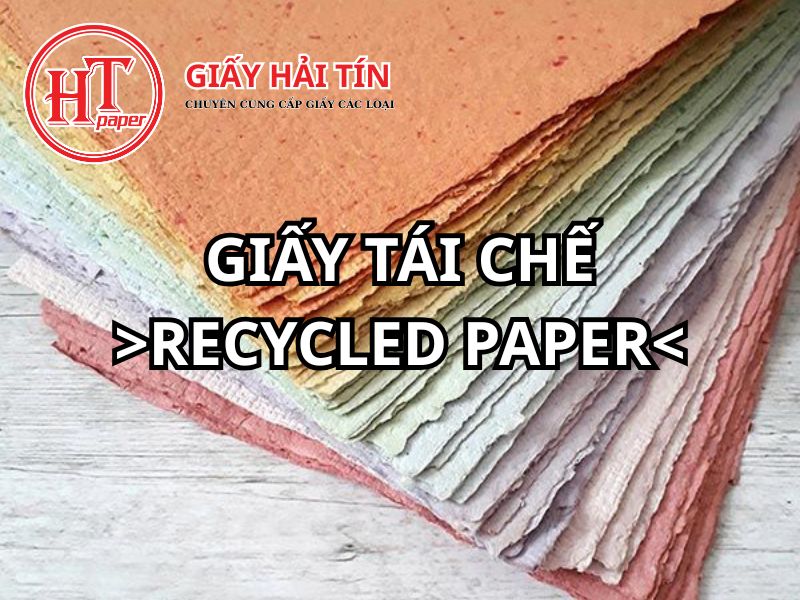Traditional Paper Making Profession in Vietnam - Characteristic Paper Products
The traditional paper making profession in Vietnam has a long history that dates back many centuries. However, the shift from handcraft production to industrial manufacturing has brought significant changes to this profession. Let's explore the formation process and various stages of paper making in Vietnam.
1. History of Paper Making in Vietnam
The art of paper making originated from China and was introduced to Vietnam around the 3rd century. Initially, the Vietnamese learned and improved paper making techniques to suit local conditions and ethnic culture.
During the feudal period, particularly under the Ly, Tran, and Le dynasties, handcrafted paper making flourished to meet the demand for documenting documents, texts, and cultural and artistic activities at that time.
One notable type of paper is the "sắc phong" paper, used to record royal decrees, which became concentrated in traditional craft villages in Northern Vietnam.
In modern times, industrial manufacturing technology has gradually replaced traditional paper making with larger scales and faster production speeds.
2. Dó Tree & Traditional Paper Products
Dó Tree
The Dó tree (paper mulberry) is a woody plant that grows in tropical mountainous regions and serves as the primary material for producing Dó paper—a traditional type of paper in Vietnam. After processing, the bark of the Dó tree is beaten, filtered, and made into thin yet sturdy sheets that do not yellow over time.
In addition to the Dó tree, several other natural materials are used to create traditional paper, such as:
- Bamboo: Ground into fine fibers, bamboo is often used to make smooth paper for printing ancient books and artwork.
- Hemp: Hemp fibers produce thick, durable paper suitable for writing in Hán Nôm (classical Vietnamese script) or calligraphy.
- Ramie: The bark of the ramie plant is used in producing vàng mã (joss paper) or festival paper.
Traditional Paper Products
Vietnamese traditional paper products are diverse, including:
- Dó paper: Widely used in Đông Hồ paintings, calligraphy, and ancient books, recognized for its smooth surface and good ink retention.
- Sắc phong paper: Thick and distinctively yellow, used specifically for recording decrees from the royal court.
- Bản paper: A specialty of the Tày and Nùng ethnic groups, commonly used in rituals and for making joss paper.
- Vàng mã: Made from various raw materials, used in traditional Vietnamese ceremonial offerings.
- Handmade paper paintings: Dó paper is utilized by many craft villages to create folk paintings, such as Đông Hồ and Hàng Trống paintings.
The richness of these products reflects the talent and creativity of the Vietnamese people while illustrating a cultural journey spanning centuries.
3. Traditional Paper Making Villages in Vietnam
Vietnam boasts numerous long-standing traditional paper making villages, where the products not only hold cultural value but are also significant in the history and spiritual life of the people.
1. Cao Bằng (Bản Paper) - Cultural Essence of the Tày and Nùng Ethnic Groups
The bản paper making village in Cao Bằng vividly reflects the culture of the Tày and Nùng people over generations. The production process is entirely manual, from peeling, soaking, to beating and making paper. Besides the products, the locals preserve cultural values through handmade paper.
Bản paper is characterized by its creamy white, smooth, and durable texture, often used in rituals and for creating religious paintings. This profession symbolizes the traditional culture of the Tày and Nùng ethnic groups.
2. Yên Thái (Sắc Paper) - The Rhythm of Old Poems
The Yên Thái village beside the poetic Tô Lịch River is famous for producing sắc phong paper, which records royal decrees.
“The wind carries the bending bamboo, The bell of Trấn Vũ rings, the rooster crows in Thọ Xương. Mist rises, smoke spreads through the fog, The rhythm of Yên Thái beats, reflecting on Tây Hồ’s mirror.”
These lines celebrate the beauty of Hanoi and the tranquil atmosphere of Yên Thái village, where the rhythmic beating of paper is a hallmark of the locals.
Yên Thái sắc phong paper is renowned for its thickness, durability, and distinctive color. The craft requires high skill in every process; despite reduced production, artisans strive to preserve this unique handmade paper-making art.
3. Dương Ổ (Dó Paper) - The Essence of Dó Paper Craft
Dương Ổ village (Bắc Ninh) has been famous for producing Dó paper since the 15th century. This paper is applied in artistic activities like Đông Hồ paintings, calligraphy, and book printing. Dương Ổ Dó paper is notable for its softness, smoothness, and durability.
Dó paper not only serves traditional rituals but is also utilized by many contemporary artists in painting, contributing to the preservation of Dó paper cultural values. Today, Dương Ổ has become a cultural destination for those who love and wish to learn about Vietnam's traditional paper-making profession.
The Dó paper craft in Dương Ổ is renowned not only for its quality but also for its profound significance, often used in culture, art, and religion. However, due to changing demands, the Dó paper craft is gradually declining.
4. Traditional Paper Production Process in Vietnam
The traditional paper production process is a sophisticated craft that requires experience and patience. Here are the basic steps:
Harvesting and processing materials: The bark of the Dó tree is harvested from trees in the northern mountains, then soaked in water to facilitate separation.
Cooking and beating the materials: The soaked bark is cooked with natural additives, then beaten by hand until it becomes a smooth pulp.
Filtering and flattening: The pulp is mixed with water, filtered through a mesh to create uniform layers of paper, and then flattened on a smooth surface.
Drying: The paper is sun-dried to remove moisture, increasing durability. Weather and humidity must be carefully considered during this process.
Finishing and cutting into products: Once dry, the paper is peeled off and cut to the desired size, and can be treated for natural coloring, used in Đông Hồ paintings or calligraphy.
5. The Role of Traditional Paper Making
Cultural Role: The paper-making profession embodies values in religious rituals and folk art, with bản paper and Dó paper commonly used in offerings and festivals.
Artistic Role: Dó paper is favored in calligraphy and painting due to its ink absorption and high durability, making it a top choice for artisans.
Everyday Role: Traditional paper remains present in daily life through the production of paper fans, ancient books, and calligraphy.
6. Transition from Handcrafted Paper to Industrial Production
The industrial revolution has significantly impacted the paper-making profession in Vietnam. Industrial paper, produced rapidly and at lower costs, has gradually replaced handcrafted paper in many fields.
Handcrafted paper: The handcrafted production process requires much labor and time but maintains a higher artistic value.
Industrial paper: Produced from wood and recycled pulp, primarily serving commercial and everyday consumption purposes.
7. Conclusion
The traditional paper making profession in Vietnam is not only a trade rich in cultural value but also a precious heritage that needs to be preserved and developed. From its early stages, the paper-making profession has undergone many changes, especially the shift from handcrafted production to industrialization.
Traditional paper products like Dó paper, sắc phong paper, and bản paper reflect the craftsmanship of the Vietnamese people and serve as historical relics and symbols of national identity. Preserving and promoting paper-making villages is essential for maintaining cultural heritage and contributing to the sustainable development of the paper industry in the future.
-----------------------------------------------------
Hải Tín Paper- Chuyên cung cấp giấy sơ đồ ngành may mặc
Thời gian làm việc : Thứ 2 - Thứ 7 : 08:00 am - 05:30 pm
Email: haitinco@gmail.com - kinhdoanh@haitinpaper.com
Xem thêm sản phẩm : tại đây
Hotline:
Tiếng Việt : 0798.909.808
CHINESE : 0938 808 998
ENGLISH : 0799.909.808
“Giấy mất bao lâu để phân hủy” không có một con số cố định — nó dao động tùy loại giấy, lớp phủ và môi trường (compost có oxy khác bãi chôn thiếu oxy). Bài viết này trình bày con số tham khảo, giải thích yếu tố ảnh hưởng, nêu riêng giấy thường dùng trong ngành may và cách xử lý/ tái sử dụng thực tế
Giấy khadi ấn độ là loại giấy thủ công truyền thống nổi bật của Ấn Độ, nổi tiếng với vẻ đẹp tự nhiên, độ bền cao và ý nghĩa văn hóa sâu sắc. Loại giấy này không chỉ dùng trong các hoạt động nghệ thuật mà còn gắn liền với lịch sử và tâm linh của đất nước này.





